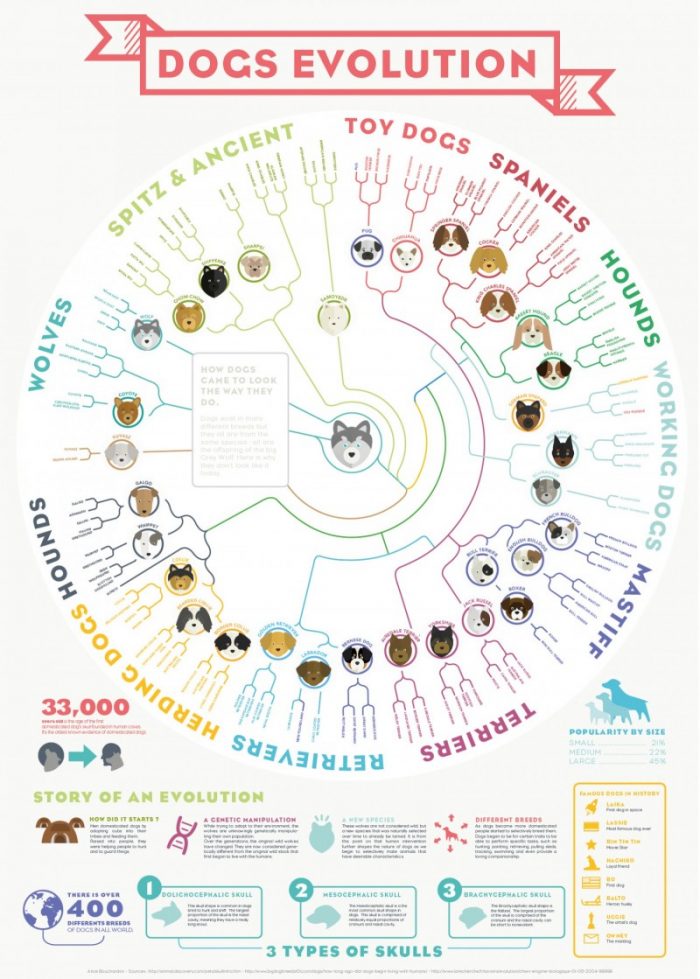
Our loveable companions have an interesting history. This is how the different shapes, sizes and breeds of dogs have come into existence over the last few centuries.
The first thing to know is that all dogs share a common ancestor. They are all domesticated versions of wolves. While the exact date is debated, dogs have been domesticated for around 100,000 years now. This means that dogs had begun adapting to human life before we started living in settled civilizations and were still nomadic.
Charles Darwin originally thought that the great diversity of pet dogs had to be due to the inbreeding of multiple different types of wild dogs. This turned out to be wrong with all modern dogs having a common ancestor, the gray wolf.
Dog breeds are broken into different categories, but many dogs are mixes of multiple breeds. Terriers, retrievers, herding dogs, hounds, wolves, spitz & ancient, toy dogs, spaniels, working dogs and mastiffs are the breeds that we recognize today.
Looking further into the popularity of different sized dogs, large dogs tend to be the favorite, making up over 45% of dog ownership. Small and medium sized dogs are both around 20%.
The reason for so many different dog breeds is due to selective breeding by humans. Humans would notice certain favorable traits of one breed of dog, and mix it with another dog in an attempt to get the best traits from both breeds. This has resulted in over 400 different breeds today.
While there are over 400 dog breeds, there are only 3 types of skulls found in dogs. The dolichocephalic skull, the mesocephalic skull and the brachycephalic skull.
This is a great visualization for tracing the ancestry of your favorite dog breed. In contrast to cats which have only been domesticated for around 10,000 years, dogs are very friendly with humans and are referred to as “man’s best friend” for good reason.
